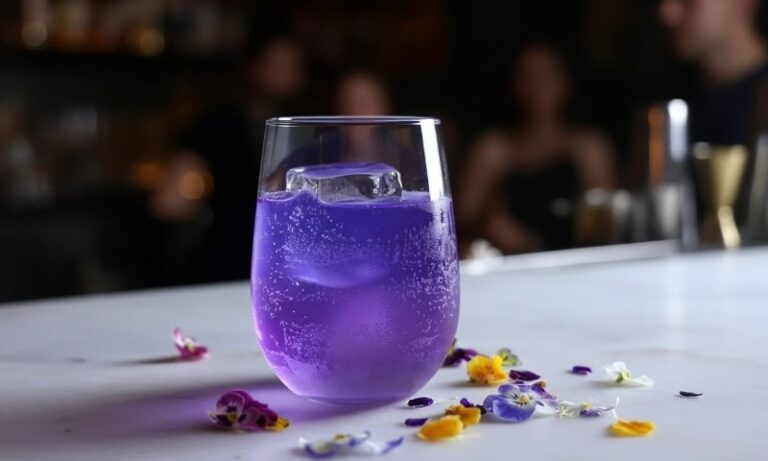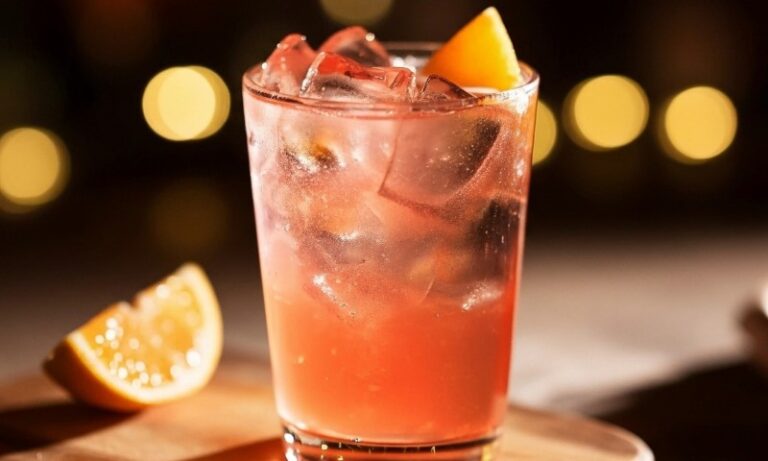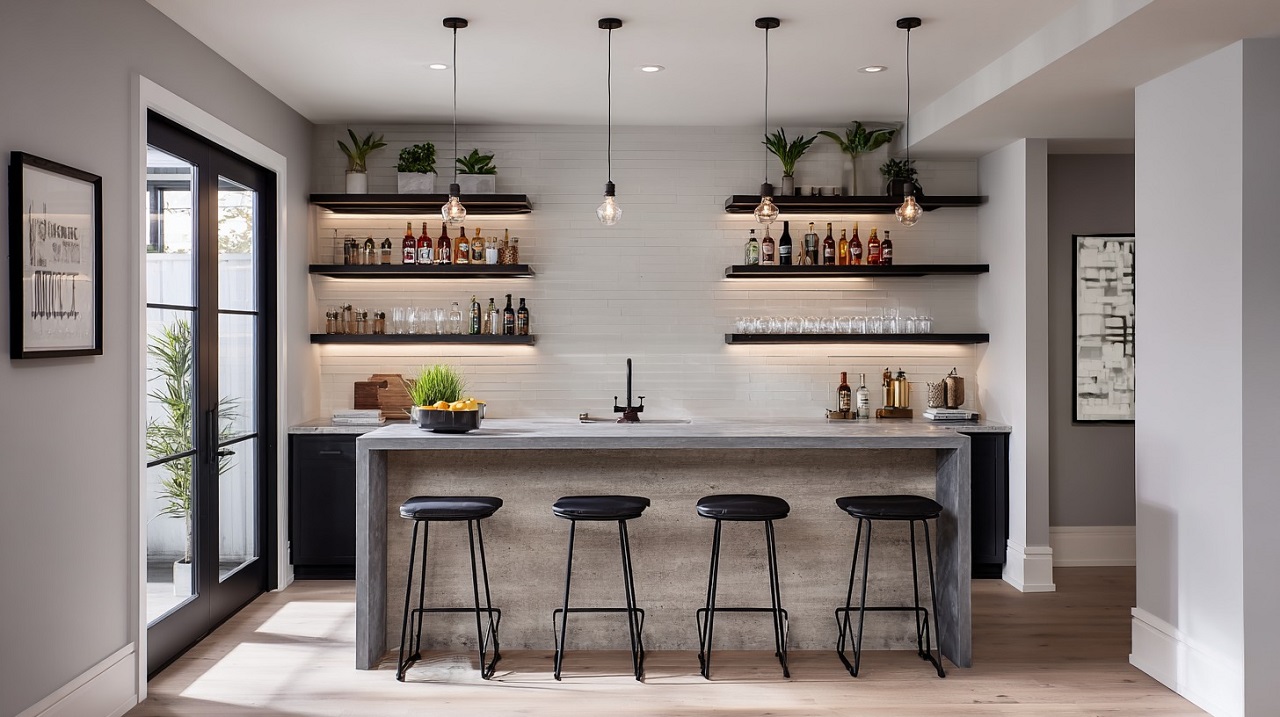A home bar changes how a room feels. It brings purpose, control, and presence. A good setup feels built, not temporary. Every part has a job. The counter draws focus. The bottles frame the view. The light gives shape to the whole area. Nothing should look random or decorative without reason.
A proper home bar fits the space as if it always belonged there. Solid materials, balanced colors, and clean lighting give it strength. Each element works together to create one steady impression.
The ideas below focus on design that feels natural, real, and lasting.
Table of Contents
Toggle1. Give the Bar Its Own Style
A home bar without a clear direction feels unfinished. The design must have a single idea that drives every choice.
The tone can lean classic, modern, or industrial, but the goal is consistency. A clear theme brings order and makes every object feel like it belongs.
When materials, colors, and shapes follow one logic, the space looks intentional instead of random.
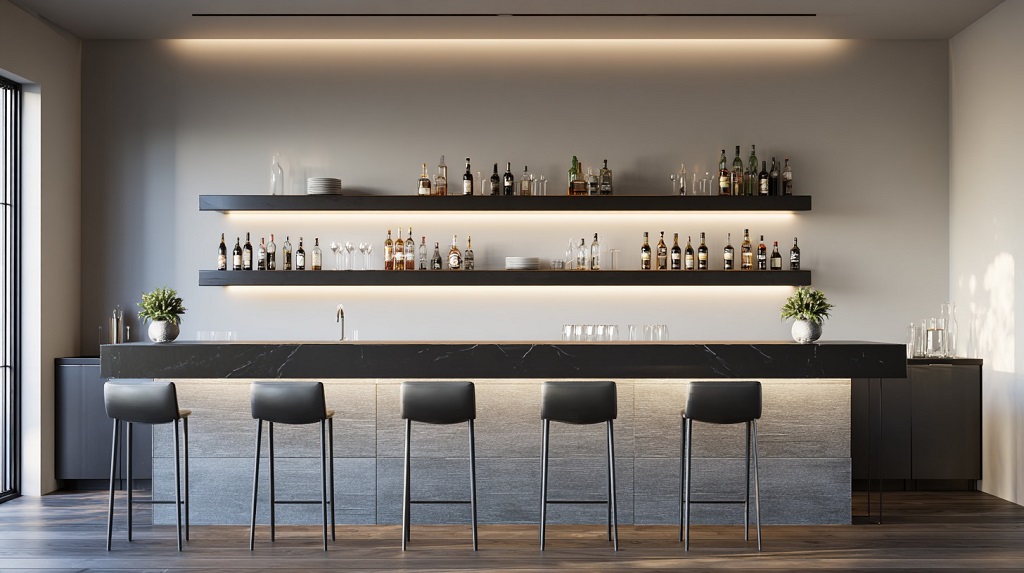
Classic
A traditional setup works best with dark wood, polished brass, and soft lighting. Leather stools and glass shelves underline a warm, grounded mood.
The style depends on depth and texture, not on gloss.
Modern
Clean lines, matte finishes, and neutral colors define a modern layout. Black stone counters, steel frames, and hidden lights build a quiet but sharp presence.
Industrial
Metal beams, exposed brick, and rough wood create a strong, raw identity. The design feels real because the materials look untouched.
The thin brick options are especially popular in this case.
Lighting must soften the harsh edges to keep it inviting.
2. Put a Mirror Behind the Bottles

A mirror behind the bar adds space, light, and movement. It catches every reflection, every shape, and turns the wall into part of the scene. The bottles look fuller, the light spreads wider, and the bar feels more alive.
The right mirror does not show off; it works quietly in the background and makes the whole setup look complete.
It must fit the full width of the bar, tight against the back wall. A solid wood frame brings a steady, classic tone.
A frameless mirror suits a cleaner, sharper design. The angle decides the quality of reflection. A slight upward tilt prevents glare and pulls more light toward the counter.
The mirror should never face direct light; soft light from above or below gives a natural glow that holds the mood steady through the evening.
3. Use Open Shelves for Display
Open shelves show confidence. They leave nothing hidden and make every bottle part of the design.
The order on those shelves tells everything about how the bar is run. When the bottles line up neatly and the glasses catch the light, the space earns attention without effort.
Wood shelves create warmth and anchor the wall. Glass shelves look lighter and bounce light through every surface.
Metal frames keep edges straight and firm. Each shelf must have enough depth so bottles sit safely and balanced, with space above for air and light. The layout should feel clear, never packed.
A simple light strip beneath each shelf gives a quiet glow and turns every bottle into part of the architecture.
4. Set the Right Mood with Light

Light shapes the bar more than any material. It decides how color looks, how glass shines, and how people feel when they sit down.
A proper lighting setup should have layers, one for the counter, one for the shelves, and one for the room around it.
Each layer serves its own purpose.
| Light Type | Placement | Purpose |
| Pendant lights | Above the counter | Direct focus on drinks and hands |
| LED strip | Under shelves | Highlight bottles and labels |
| Wall sconces | Beside the mirror | Add warmth and soften shadows |
| Floor light | Under bar footrest | Create quiet depth at ground level |
Use warm tones between 2200K and 2700K. Cold white kills the atmosphere and makes bottles look sterile.
Lighting should never overpower the space; it should sit low and steady, like a slow pulse through the room.
5. Stick to Strong Colors
Color defines tone before anyone even speaks. The shades you pick decide if the bar feels grounded or light.
A deep color palette builds mood and helps the bottles stand out instead of blending into the background.
Reliable Color Combinations
- Dark green with brass: Feels rich and balanced.
- Charcoal with wood: Feels strong and timeless.
- Navy with copper: Feels confident and calm.
Accent colors should appear only in small amounts – on stool seats, metal trims, or labels. Large surfaces must stay controlled. Matte paint absorbs light better than gloss and keeps the bar feeling mature.
The rule is simple: dark tones for structure, metal for balance, and light for depth.
6. Mix Materials for More Attractive Design
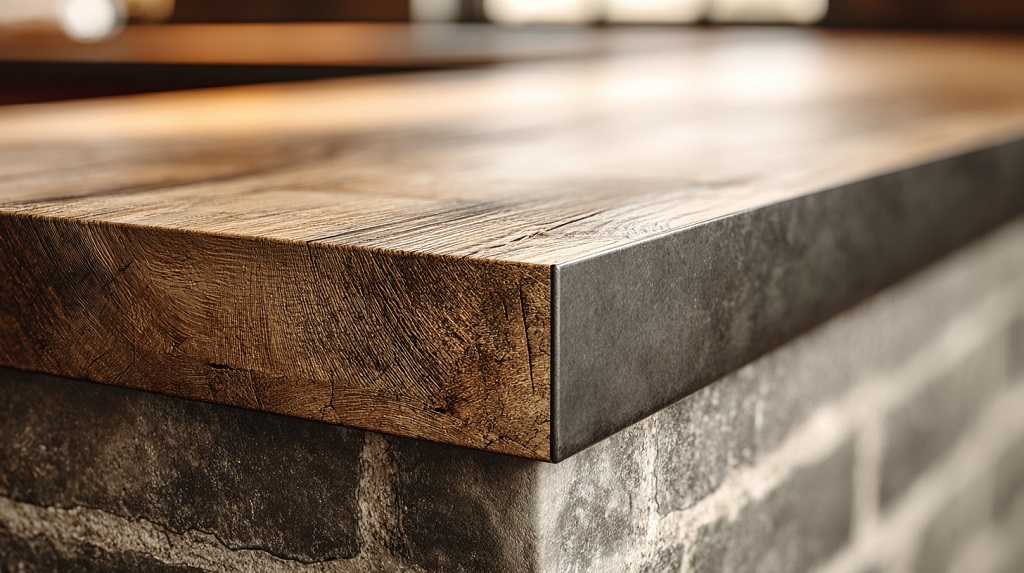
Texture gives a bar its voice. Smooth, rough, polished, or grainy, all of it speaks to the hand before the eye.
The mix of materials builds realism and prevents the space from looking staged.
- Oak and black steel for strength
- Walnut and brushed brass for warmth
- Concrete and glass for a modern edge
Practical Tips
Surfaces that guests touch should feel solid and dry, never slippery. The counter, stools, and footrest must share at least one common element to tie the design together. A rough brick or stone base under the counter can add mass and contrast to smoother parts above.
Texture also affects sound. Hard surfaces reflect noise, soft ones absorb it. A strip of leather or wood behind the stools can keep sound balanced, so voices stay clear without echo.
The right combination of texture and tone makes a home bar feel built by hand, not assembled from catalog pieces.
7. Keep Useful Items in Sight
Every good bar works best when essentials stay visible and within reach. Tools, glassware, and small accessories create rhythm when placed in order.
They give movement and show that the bar is used with purpose, not only kept for display.
A clean setup always feels more confident than a crowded one.
Core Items to Keep Ready
- Shaker, strainer, and jigger
- Ice bucket and tongs
- Bottle opener and corkscrew
- Cutting board and bar knife
- Set of clean glasses for different drinks
Each tool must have its own fixed position. Wood trays or metal holders keep them in order and easy to reach.
Nothing kills rhythm like searching for a shaker in a drawer. Everything that serves a real function can also serve as part of the design.
A steel shaker, a wooden muddler, or a copper bucket each add texture and signal care.
Proper placement also saves motion. Items used often should sit no farther than a hand’s reach. Once organized, the bar looks ready, not staged.
8. Add a Few Real Touches

A home bar gains meaning through small, personal details. The goal is to show identity without clutter.
One photo, one framed record, or a single neon sign says more than a wall filled with random decorations. Real details have memory behind them, and that weight gives the space warmth.
Objects should match the tone of the bar. Old signs pair well with rustic setups. Clean artwork fits modern lines.
Framed posters from old liquor ads or record sleeves give charm when kept subtle. Light placement around those items matters too; soft side light works better than direct beams.
Every addition must earn its spot. Nothing should look like filler.
When the details match the tone and placement is precise, the space feels complete and lived-in.
The Bottom Line
A home bar built with care stands apart without needing attention. Every surface, edge, and color tells a story of balance and precision.
The counter anchors the room, the light sets the tone, and the materials hold everything together. The goal is not to decorate but to build something that feels complete.
A setup that looks professional yet personal never fades into the background noise. It becomes part of how the house breathes.
Related Posts:
- Cocktail Bar Design Ideas to Elevate Your Home or Business
- How to Create a Signature Cocktail for Your Bar?…
- Godfather Cocktail Recipe - Simple, Smooth, and…
- How to Build a Home Bar - Essential Spirits and Tools
- What Is a Dive Bar? The Raw Appeal of Unpolished Pubs
- Creative Bar Promotions That Will Have Your…





